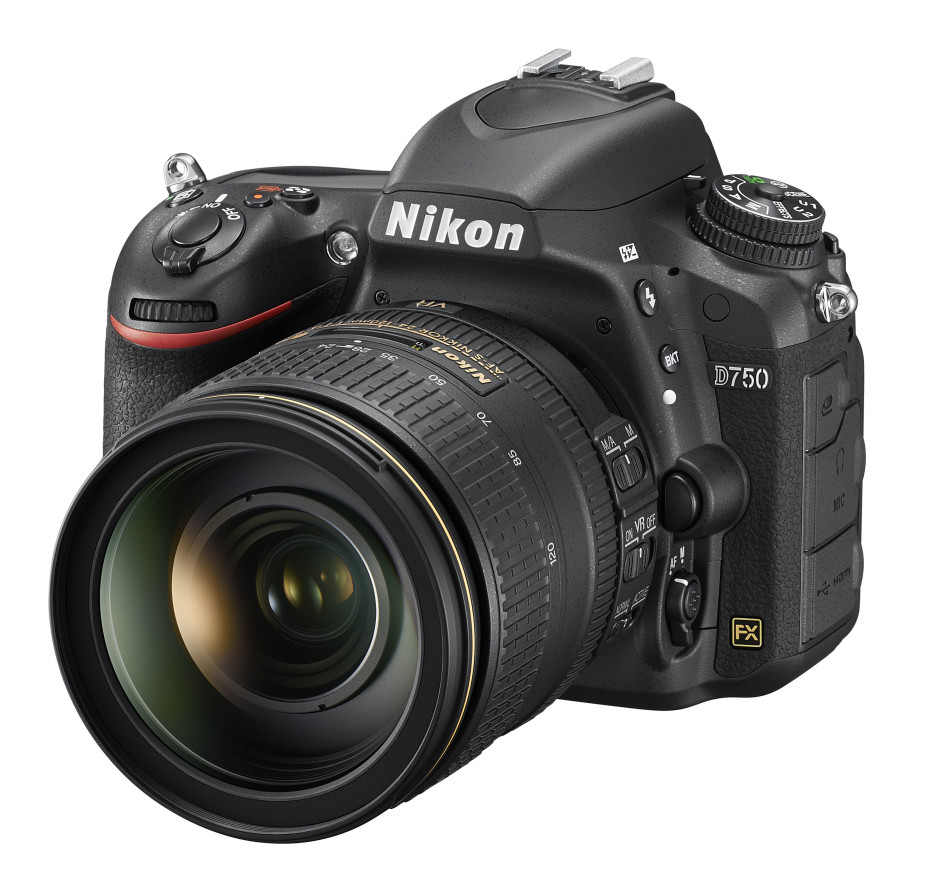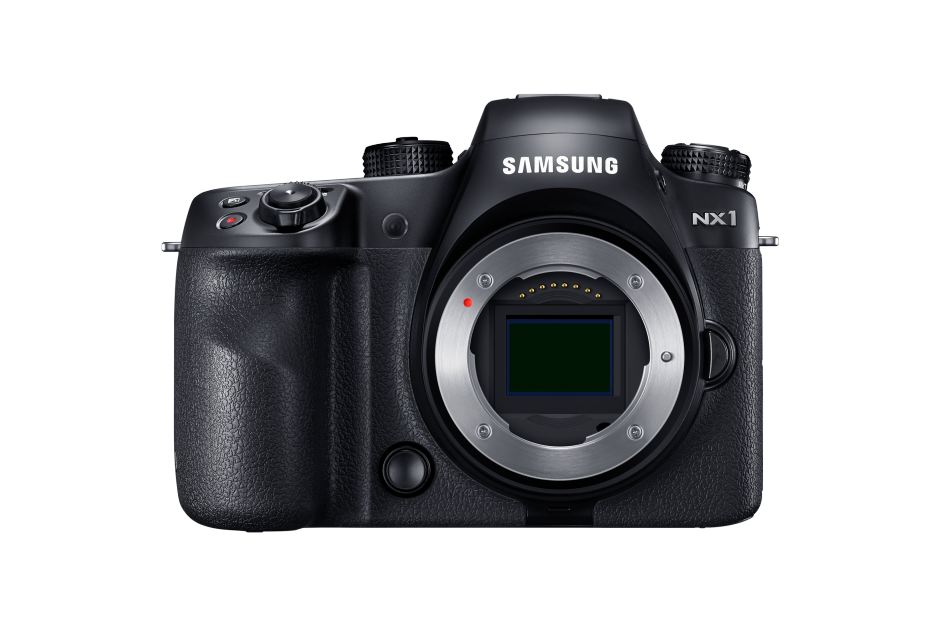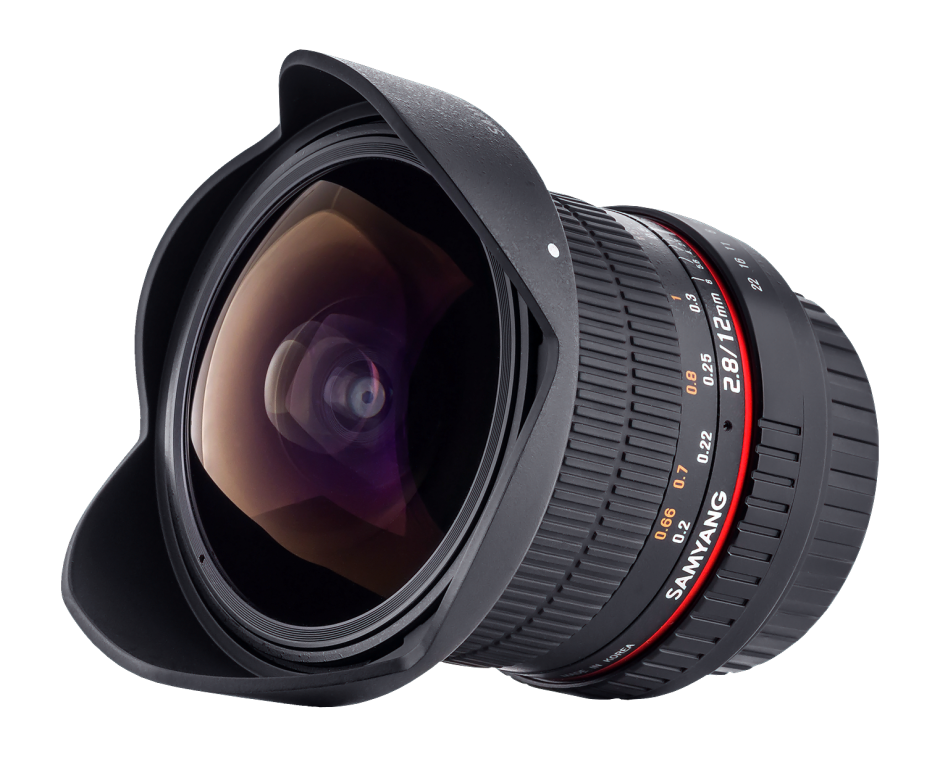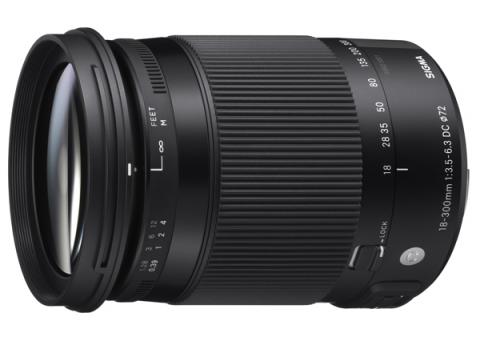The Consumer Electronics Show in Las Vegas is one of the biggest platforms in the world for announcing new photography kit. So what went down in 2015?
The great Photokina 2014 round-up
Keeping track of everything new that's announced at Photokina can feel like something of a labour of Sisyphus. So rather than cover every new product with an individual article and drive everyone to distraction, we've opted to summarise as many as we can in one place. This is Photokina 2014. Enjoy!
Canon
After what amounts to years of speculation, Canon has finally announced the EOS 7D mark II. The basic spec: APS-C, 20 megapixel sensor; ISO 100 to 16,000 but expandable to 51,200; dual DIGIC 6 processors; 65-point auto-focus; top shooting speed of 10 frames-per-second; and built-in GPS. All for $1,800, body-only.
Three new lenses have joined the line-up, too: an EF-S 24mm ƒ/2.8 STM for $149.00; an EF 24-105mm ƒ/4.0L IS STM for $599; and the EF 400mm ƒ/4.0L DO-IS II (USM) at $6,899.
There are also three new compact cameras. The premium G7X with its 1", 20 megapixel sensor and DIGIC 6 processor; top sensitivity of ISO 12,800; and a 24 to 100mm lens with a maximum aperture of ƒ/1.8 at its widest and ƒ/2.8 at the telephoto end, for $700. The SX60 superzoom with its 65× optical zoom for $550. And the N2, which, like the Powershot N, leaves me baffled.
Fujifilm
Fujifilm announced an update to its much-loved X100-series; the X100T. This one comes with an improved hybrid viewfinder, enhanced controls, and faster shuttre speeds. All for $1,300, in either black or silver.
The X20 has been upgraded to the X30. The improvements to Fuji's point-and-shoot focus on a new viewfinder and a tilting 3" high-res LCD. You can order one for £600.
There were also two new lenses: the X-F 56mm ƒ/1.2 R APD (85mm quivalent in 35mm format) for $1,500. (APD is apodisation. It is designed to give even smoother bokeh than the normal XF56. Great for portrait work.) And the weather resistant 50-140mm ƒ/2.8 R LM OIS WR at £1,600.
And don't forget the graphite-look X-T1 for $1,500 body-only.
Joby
Roll-up, roll-up, get your suction cups from Joby! Adding to its range of twisty, bendy, go-anywhere camera support devices, Joby has unveiled two suction cups, designed to provide industrial-strength hold on all types of smooth, clean, and non-porous surfaces. One has a locking arm, that's best for use in vibration-prone situations, such as in cars or on board boats (£33). The other has a Gorilla-pod arm, a quick-twist, flexible option that's better for windows, walls, and inside cars (£25).
[gallery columns="2" ids="6976,6975"]
There's also the Pro Sling Strap, designed for dSLRs, to keep your camera close to your body but easy to pull up to your eye (£57); the GorillaPod Focus + Ballhead X is the strongest and largest GorillaPod to date (£140); and the Flash Clamp and Locking Arm, which helps to transform everyday objects into lighting assistants with the two articulating ball joints that let you position your flash at any angle (£35).
[gallery ids="6979,6978,6977"]
Leica
Leica announced a laundry list of new cameras at Photokina:
- Leica M 60 Edition - an LCD-less camera, limited to 600 units, and costing $18,500 with a 35 Summilux stainless steel lens
- M-A
- X - Type 113; and X-E
- S - Type 007; and S-E
- V-Lux - Type 114
- D-Lux - Type 109, basically a Panasonic LX100
And a goodly selection of lenses, too. Leica enthusiasts couldn't have known which way to look first!
Nikon
Nikon's big announcement was the D750: an FX-format camera with 24 megapixel sensor and EXPEED 4 processor, 51-point autofocus system, sensitivity ranging from ISO 100 to 12,800, a tilting LCD, built-in wi-fi, all crammed into a smaller-than-expected body. For $2,300, body-only.
There was also the new Nikkor AF-S 20mm ƒ/1.8G ED and the SB-500 Speedlight.
Olympus
[gallery ids="6969,6968,6967"]
As well as announcing the E-PL7, Olympus brought out its E-M1 in silver (body-only for $1,400) and a new 40-150mm ƒ/2.8 lens for $1,500.
Panasonic
Panasonic came up with two new cameras and a new lens, together with the re-branded Leica cameras under the V-Lux and D-Lux badges.
[gallery ids="6966,6965,6964"]
The new LX100 camera is available for $900. It has a Micro Four Thirds sensor, a 4-75mm Leica DC lens (ƒ/1.7-2.8), and comes with an external flash. The GM5 mirror-less camera comes in black or red, with a 12-32mm lens, for $900.
And there's also the Panasonic G Vario 35-100mm ƒ/4.0-5.6 ASPH lens for G-series cameras, costing about $400.
Samsung
Samsung let loose a new camera, lens, grip, battery, and charger on the public in Köln. The camera is the 4K-video-enabled 28 megapixel NX1 for $1,500 body-only and the lens the 50-150mm S.
Samyang
As well as the 50 mm T1.5 AS UMC cine lens, Samyang also announced its 12 mm ƒ/2.8 ED AS NCS fish-eye lens, which has been designed for full-frame cameras. We don't have a price or release date yet for it, but I am looking forward to seeing it.
Sigma
Sigma announced its dp1 Quattro camera, with a Foveon direct image sensor that is similar to traditional colour film in that its multiple layers capture all of the information that visible light transmits. It also announced two different versions of the same lens: the 150-600mm F/5-6.3 DG OS HSM Sports and the 150-600mm F/5-6.3 DG OS HSM Contemporary. The sports version is, probably quite obviously aimed at sports and wildlife photographers. The contemporary label is more compact and portable.
There was also the 18-300mm F/3.5-6.3 DC Macro OS HSM Contemporary lens.
Sony
Just before Photokina, Sony announced two new lens units, to attach to smartphones. These were the QX1 and QX30. During Photokina, a slew of camcorders, video cameras, and accessories were unveiled, too. The things that caught my eye was the flash unit, the HVL-F32M for $300.
St Jude be praised! The Canon EOS M won an award!
It seems scarcely believeable but the much-derided Canon EOS M has managed to bag itself an award. I can hear you muttering and imagine you scratching your heads quizzically: just what was deemed award-worthy about the mirror-less camera with criminally slow auto-focusing speeds and risibly bad balance, and by whom? It would seem that the iF Design Award jury considered that its user interface was deserving of the Product interface: iF Communication Design Award 2014.
To give the EOS M its due, while its auto-focus was referred to as 'glacial', just about every review that I have read has lauded its touchscreen interface. At least Canon got something right there, then.
Canon also happened to pick up three other iF awards for its cameras: the 5D mark III, 100D, and the Powershot N. There were more its camcorders, printers, and projectors.
Canon's rumoured withdrawal from the compact market is no great loss
It is only a rumour, but there are suggestions that Canon will soon cease production of lower-end, sub-$200 point-and-shoot cameras. Given the steady erosion of compact camera sales and their inability to compete against the convenience and ubiquity of the smartphone, it's hardly surprising. It's also a step taken already by Olympus by Fujifilm. And just as we stated in the cases of both Olympus and Fujifilm, this is a good thing. By my count since January 2012, Canon has released twelve IXUS model cameras and ten Powershot A-series cameras. These are typically regarded as its cheaper and cheerier models. They tend to range between £80 and £180, although the odd few come in much higher than that, have more than enough megapixels to keep the pushiest salesperson smiling, a decent optical zoom range, the ability to record video, and sometimes are blessed with image stabilisation. Unlike Canon's dSLR range, which comprises a controlled range of cameras with clear spec expectations at given price-points, it's verging on the impossible to discern one compact model from another. Their variations in spec are so slender that they all merge into one rainbow-coloured haze.

Herein is their downfall. First, they're not something that you'd go out to buy when you have a wirelessly connected smartphone in your pocket. There's not really enough value-added to justify the outlay. Second: when there are so many different cameras with so little to differentiate one from another, it's little wonder that consumers' eyes glaze over and they decide to stick with what they now know: their iPhones and their Samsung Galaxys. Choice is a good thing, but sometimes offering too much choice, without making obvious why it's needed, is self-defeating.
Let's not forget, that little tot-up of cameras didn't include any of Canon's Powershot SX range, which covers the superzooms, its D-series rugged cameras, the S- and G-series, which are its high-end compacts, and the quite-frankly-ridiculous N-series.
If anything can convince you that Canon really ought give up on the definitely-fled smartphone crowd, it's the N-series of cameras. They smacked of desperation, of designers under pressure to produce something 'young and funky and with-it' in an attempt to recapture a market long since gone, and engineers who'd rather be working on any other project than that one. Yes, they are out of the 'sub-$200' bracket of cameras that are expected to be axed, but they have no place in the range, either.
By relieving itself of the burden of the cheap end of the compact camera spectrum, Canon can refocus its attentions on the areas where there is hope, where there is potential, where there really is a market. Most definitely on its dSLRs, that seem to have gone off of the boil ever so slightly of late. Perhaps on its higher-end compact cameras, which are still selling and I believe show that compacts do still have a place in the canon of cameras, but could benefit from some innovation and development. And maybe even in the mirror-less division, where the EOS M has been so painfully disappointing.
This shouldn't be regarded as a move of panic or despair on Canon's part. I actually think it's rather mature. It shows how it might be beginning to analyse the market, to identify its strengths and weaknesses, and to come to terms with the idea of an evolving photography world.
Canon EOS M2 announced in Japan. When next the rest of the world?
Finally! There have been months of rumours and speculation swirling about the upgrade to Canon's mirror-less EOS M camera and at last the great unveiling has taken place. At least, in Japan. The rest of the world must wait to see if Canon has put any guts and determination into this model. When the EOS M was launched last year, I was convinced that a late, single entry into the mirror-less market by Canon would have made it a camera worth waiting for. Canon would crack the mirror-less market and take the photography world by storm. Sadly, I was desperately mistaken when all that one heard about it was how mindbendingly slow the auto-focus was and it felt more like a camera that Canon felt obligated to produce, rather than one it had engineered with heart and soul. I'm not convinced that the EOS M2 is going to rekindle any verve or sparkle in the notion of a Canon mirror-less camera, either.
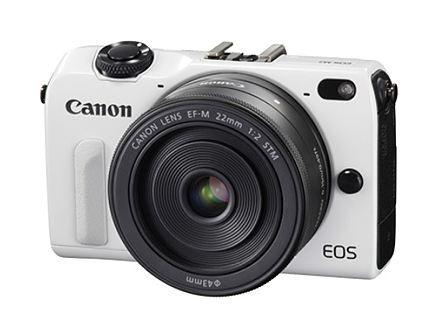
The M2's new Hybrid CMOS AF II auto-focus system is meant to be 2.3× faster than that in its predecessor, but the impression that I have is that they'd have to actively try to make it any slower, so this doesn't say very much. I'm seeing a few raised eyebrows that the M2 isn't capitalising on the dual pixel technology seen in the 70D, which makes for smoother and faster auto-focusing when in live view mode.
The M2 still uses an 18 megapixel APS-C CMOS sensor powered by a DIGIC 5 processor, but there's now wi-fi and it's approximately 8% smaller than the original EOS M. But why-oh-why when the Sony NEX-6 has a frames-per-second rate of 10, does the EOS M2 languish with 4.6? When you're not producing an entire range of mirror-less cameras, you need your solitary flagship to stand out from the crowd.
Apart from seeing if the auto-focus has improved, there's nothing about the EOS M2 that makes me want to pick it up and try it. There's no sense of excitement or innovation about it. It's coming over as just another camera and dammit, I don't want that.
Engadget is pricing it at ¥84,800 with a kit lens, or ¥64,800 body-only, due out later this month. Those prices equate to roughly $820 and $625, but you should never make straight conversions. When the EOS M2 does reach Europe and the US, it'll likely be more pricey.
TIPA 2013 - who won what
 Once a year the Technical Press Imaging Association, or TIPA, meets in a desirable location—this year it was Hong Kong, last year in was Cape Town—to settle on which manufacturers have produced the best easy-to-use compact cameras, most innovative tripods, and the swishest top-end dSLRs over the past 12 months.
Once a year the Technical Press Imaging Association, or TIPA, meets in a desirable location—this year it was Hong Kong, last year in was Cape Town—to settle on which manufacturers have produced the best easy-to-use compact cameras, most innovative tripods, and the swishest top-end dSLRs over the past 12 months.
There are in fact 40 different categories that are decided on by representatives from TIPA's 27 member magazines, as well as the Camera Journal Press Club of Japan.
Canon took most of the dSLR spoils, winning best entry-level with the 100D, best expert with the 6D, and best video dSLR with the 1D C; Nikon, however, won the advanced category with its D7100.
When it came to compact system cameras, or mirror-less cameras, or EVIL cameras, Fujifilm, Olympus, Panasonic, and Samsung all had a look-in. Fujifilm's X-E1 won the best expert CSC award; Olympus took the entry level CSC honours with the PEN E-PL5; the professional CSC prize went to Panasonic for its GH3; and finally the advanced prize was won by the Samsung Smart Camera NX300. If you can wade your through the difference between 'professional', 'advanced' and 'expert', then you're a better woman than I am.
The compact camera categories were split between Nikon and Panasonic. Nikon walked off with awards for its Coolpix S01 in the 'easy' class and its P520 superzoom. The rugged camera was Panasonic's prize, though, for the FT5 (or TS5, depending on where you are).
Canon, Fujinon, Nikon, Sigma, and Sony all won prizes for their lenses, ranging from 'best CSC prime' (the Fujinon XF 14mm ƒ/2.8 R) to 'best professional lens' (Canon's EF 24-70mm ƒ/2.8L II USM), via best entry-level dSLR lens (the Sigma 17-70mm ƒ/2.8-4 DC MACRO OS HSM).
As for best premium camera, that was the Sony RX1; best professional camera was the Leica M; and best imaging innovation was awarded to Samsung for its 45mm ƒ/1.8 (2D/3D) lens.
If you want to check out the rest of the winners, which includes best media storage, imaging monitor, and photo TV, you can see the whole list on TIPA's website.
I can't help but feel that with a carousel of categories where the differences in criteria aren't necessarily discernible, it's more a case of 'These were all really good products and we need to find some way of showing that.' I can't say that the awards will encourage me to buy a Nikon superzoom, but it must be gratifying for the manufacturers to receive a pat on the back.
Crazy or sensible? A full-frame sensor in a smaller-sized body.

Same-same-but-different? How about the 5D MkIII's sensor, in a smaller body?
Sometime yesterday, a couple of articles on a rumoured smaller-sized Canon camera with a full-frame sensor popped into my news feed. Most of yesterday was spent writing, not reading, and I didn't get the chance to pay much attention to them until this morning.
The gory details of the camera are themselves interesting: it would be smaller and lighter than a 5D MkIII, with a mostly plastic construction and possibly a pop-up flash. It'd have a 19 point auto-focus system, a sensitivity range of ISO 100 to 51,200, and 22 megapixel full-frame sensor.
But what actually interested me more was F-Stoppers' reaction to this potential new camera:
Canon Rumors has said that an entry level full frame doesn’t make sense, and though affordable access to the 5D MKIII sensor is tantalizing, I kind of agree. A full frame sensor isn’t really necessary for most of the photographers out there and may just be an attempt to move emphasis away from megapixel count and grab a few more of those consumer dollars that drive the company.
Really? You reckon that there are photographers out there who wouldn't be seriously interested in a camera that has a full-frame sensor, but is smaller and lighter than a 5D MkIII. Sure, Canon would have to get this camera absolutely right, but hell, I'd love a full-frame sensor in a body that I didn't need a small trailer to transport.
You see, I like this idea of having choice. My reasons for choosing to use a camera that isn't classically categorised as 'Pro' or 'Prosumer' aren't necessarily dictated by whether or not I'm scared of all the knobs and levers on one, or whether or not I think I need to be able to shoot lots and lots of frames per second, or whether or not I'm wooed by all those extra megapixels. One of them is size and weight. The other is cost. There are certain elements in a camera that I'm prepared to sacrifice for others, but if I'm offered a camera that closer meets my wish-list, then so much the better.
Ideally, I'd like some kind of identi-kit camera, where I could pick and choose the elements that are most important to me. The progressive scale where you have more of everything in each iteration doesn't necessarily meet my needs. Of course, in some respects, it goes with the territory; increase one factor and it automatically increases another. Still, wouldn't it be great to have a camera that meets your specifications? If that's even a possibility, it's a long way off. But until then, Canon offering a variation on a theme is a good thing, in my opinion.
Gallery: Embedded with the Territorial Army

For one of my final years of university assignments (I was an International Journalism student at Liverpool John Moore's University), I contacted the Territorial Army to see whether they would let me come along on a training exercise. They agreed, and I spent a long week-end in the rain and the fog, chasing people holding guns with my Canon.
This was back in 2003, and I just re-discovered and re-edited the original files. I remember clearly editing them, one by one, in Photoshop, the first time around. This time. I gave them the Lightroom treatment, in order to make them look like older photographs; Like the ones you might see coming out of the makeshift dark-rooms in conflicts in the 1950s and 1960s, perhaps.
The photos are in the gallery carousel above. Enjoy!
Canon Powershot S95 replacement imminent

Canon seem to have stopped the factories, and the shops are running dry of Canon’s über-compact does-it-all wünderkind. (How many umlauts can I stick in a single sentence?) It has all gone very quiet from Canon, which can only mean one thing: Everybody’s favourite compact is getting an upgrade (or should I say üpgrade?)
It’s a bit of a long story involving mine and my brother’s annual jaunt to a music festival and needing some pictures for a book, but last week I was desperate to lay my grubby mitts on the aforementioned pocket-sized snapperbox capable of shooting in RAW. If I were borrowing one, I would’ve taken anything that was sent my way, but given that I was actually prepared to lay down about £350 on this, the Canon S95 was my camera of choice. What can I say? I’m a devoted Canon fangirl. (And as far as I’m aware, there hasn’t been a bad review of the S95 yet.)
Searching high and low
And so the hunt began. First stop, John Lewis, that glorious flagship of middle-class shopping extravaganza. The audio visual team at the Oxford Street store are awesome, and if everything goes mammaries-up, their aftersales is splendid. I looked online, no S95s in stock. Odd, but oh well. So I called them. The entire company doesn’t have a single S95 available. Not a one.
Onwards to Amazon.co.uk. They only have a single one available. Amazon.com still has a few, but they don’t ship to the UK, so that wasn’t going to happen either.
So, in the company of my long-suffering father, I trudged along the High Street in the town close to the Small Aperture country retreat. Did any one of the electrical retailers there have an S95? Nope. One shop checked its system for me and informed me that they’ve discontinued it and none of their stores has it in stock.
So what the blazes is going on with the Canon S95?
My immediate reaction was that perhaps Canon has been struggling in the aftermath of the horrible tsunami and the S95 has come unstuck because of it. But, being the inquisitive sod that I am, I asked Canon what the deal with the S95 is, and they are declining to get back to me with the full details.
Is there a something else going on here? A something that might be an S99 in the near future, perhaps?
Photography courses from IdeasTap

If you’re in or around London and fancy brushing up your skills, the creative arts charity IdeasTap is laying on a series of photography courses starting on 26 January and ending on 21 March. Classes range from the technical to the practical, and cover lighting, post-production, and managing your business, too.
The courses have been organised according to ability, so if you’re a relative beginner, don’t worry, you won’t be sitting next to some dude with a Canon 5D mkII and fifteen years of experience!
The cost of the courses has been subsided and if you’re an IdeasTap member, there’s a 50% discount. Not bad!
If you think that you might be interested, take a look at the IdeasTap website to see precisely what is available and when.
A camera that sees around corners

It’s super-early days, but the super-clever people at MIT have developed a camera that can see around corners. And when I say super-early days, I really do mean it. At the moment, the prototype camera is the size of a room and relies on a femtosecond laser. It’s not exactly technology that Canon or Nikon will be making available next year!
The camera works by firing a beam from a laser that bounces around the scene, and some of the light particles will eventually make their way back to the camera’s sensor, where they will be pieced back together to make an image. It’s a process that needs to be repeated at least 12 times to form a complete, if at the moment somewhat fuzzy, image. In order to protect the sensor from the ultra-strong intensity of the laser, the shutter won’t open immediately, either.
Professor Ramesh Raskar is heading the team that has developed the camera. They’re envisaging it being used to assist in search-and-rescue missions, and with robot vision, although they are working towards an endoscope right now. And there’s a way to go yet as the camera still gets confused by complex scenes and only works in the lab. But still. Wow!
(Headsup to the BBC.)
Found: Cheap strobist flash review
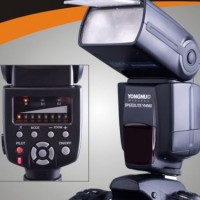
If you’re an aspiring strobist, you might be shocked by the amount of cash you have to plonk down for a few Canon EX-580s. To get a decent set-up, you’ll need 3 of them, at least. And at $450 a pop, you’re not going to be much richer for it, really.
Luckily, there is a way out: The Chinese company Yongnuo makes some absolutely bargainous flashguns: the YN-560s are nearly as powerful as the 580s, and have a few clever tricks up their sleeve.
At $85 per flashgun, they’re also a fifth of the price of the Canon equivalent – but does it stack up?
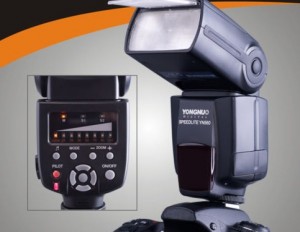
It looks a bit cheap, and the LED interface can be tricky to wrap your head around, but who cares: it's all about the light you get out of the flashgun.
The legendary flasher David Hobby, of Strobist fame, got his paws on a production model YN-560 speedlight.
He found that the production quality was solid, but the Quality Assurance left quite a bit to be desired:
I so wanted to love you, YN-560. Now you hit me with a second, non-working feature. The absence of which essentially makes the flash unusable for me, necessitating a round-trip return to China.
On the one hand, this is why I strongly suggest buying direct. On the other hand, I would also suggest that Yongnuo join LumoPro in hand-checking each unit before it goes out. It is only a wasted effort if your quality control is hitting 100%. And you are not there yet, Yongnuo.
Then again, for $85, you can afford to buy a few extra ones, and keep sending the defective ones back to China for replacement under their 1-year warrantee, can’t you?
You can read the Strobist’s full test drive over on the Strobist blog.










